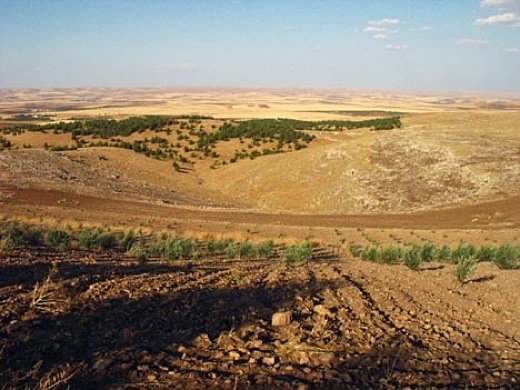 Image above: Turkey's arid central Anatolian steppe is a threatened landscape. Photo by Jennifer Hattam for original article.
Image above: Turkey's arid central Anatolian steppe is a threatened landscape. Photo by Jennifer Hattam for original article. The most common landscape in Turkey today, the Central Anatolian steppe is threatened by the usual suspects: poor water management, encroaching agricultural development, and the damming of its rivers. But according to one local environmentalist, this arid natural grassland ecosystem has also been the victim of good intentions.
"We subconsciously believe that nature should consist of green forests... People have the misconception that steppe areas are arid or denuded and they tend to plant trees in such areas," Turan Çetin, a member of the Doğa Derneği (Nature Association) told the local paper the Hürriyet Daily News & Economic Review. He added that planting trees as part of social-responsibility efforts not only harms fragile steppe ecosystems, but is counterproductive because the trees often cannot successfully grow or reproduce there.
Rich Assortment Of Native Species Introducing nonnative plants and other species through ill-thought-of forestation practices degrades steppe habitat, Çetin said, threatening the rich assortment of native -- and often endangered -- animals that call the ecosystem home. Species endemic to the Central Anatolian steppe include bald ibises, striped hyenas, monitor lizards, and vultures. Anatolian leopards are most likely already extinct in the wild due to trophy hunting.
In addition to combating misconceptions about tree-planting, environmentalists like Çetin are working to educate local people about the need to protect the steppe's native species.
"Local people used to hunt and kill some of these species, such as monitor lizards, on the grounds that they were frightening," Çetin said. "[But] this huge lizard lives on mice and poisonous snakes; it is in fact a great help to farmers. After realizing this, they've started to protect the animal."
.
No comments :
Post a Comment